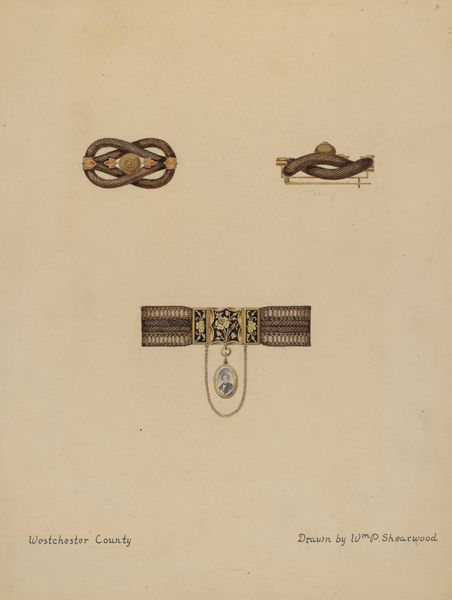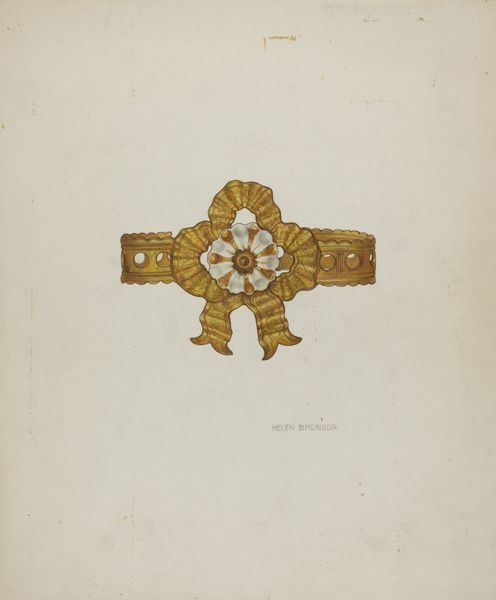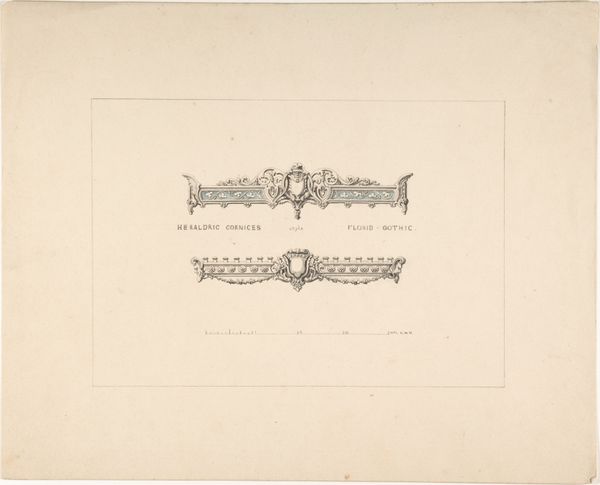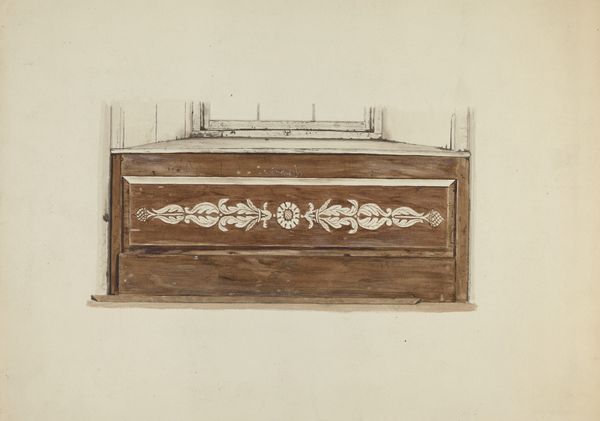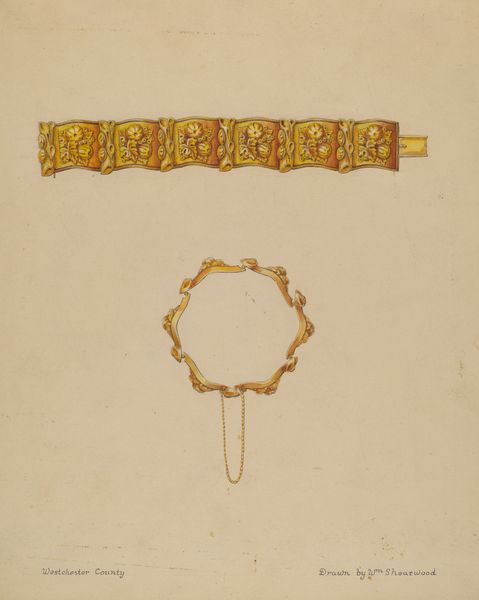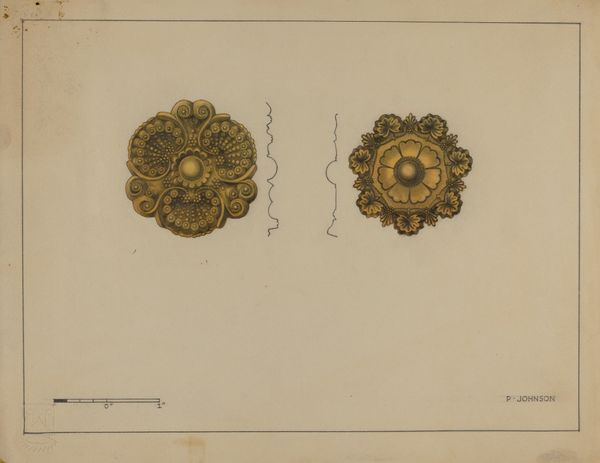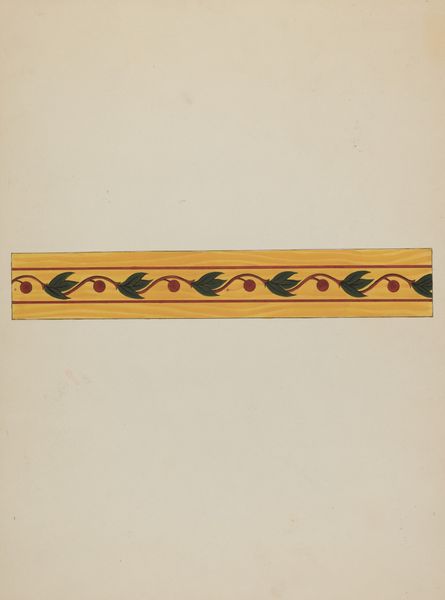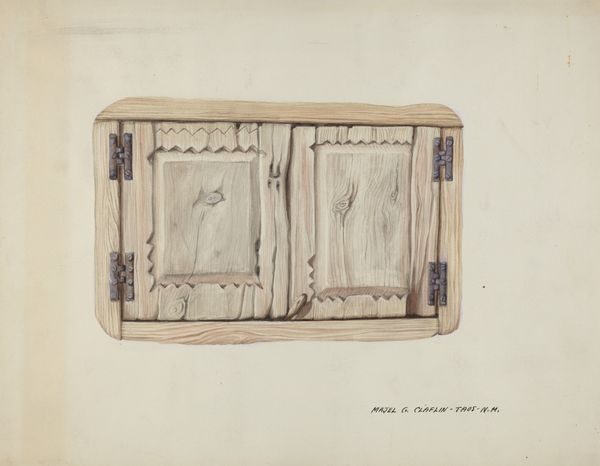
drawing
#
photo of handprinted image
#
drawing
#
aged paper
#
toned paper
#
light pencil work
#
water colours
#
photo restoration
#
historical fashion
#
coloured pencil
#
watercolour illustration
#
watercolor
Dimensions: overall: 22.9 x 28 cm (9 x 11 in.)
Copyright: National Gallery of Art: CC0 1.0
Curator: Here we have "Pin," a drawing created around 1937 by Tulita Westfall. It seems to be executed with watercolor and colored pencil on toned paper. My initial thought is that it looks like a meticulously detailed rendering. Editor: Yes, and what's interesting is how these detailed images, which might have been fashion design ideas or simply product design sketches, reflected both personal taste and wider cultural trends relating to class and aspirational identities during the Depression era. Curator: It’s difficult not to consider it in terms of art deco. The stylized flower motif, the symmetry, and that band of what appears to be dark enamel are all evocative of that aesthetic, aren't they? But considering the date, right on the cusp, is this a sign of trends evolving? Is it already looking toward the war years? Editor: Precisely. We have to look at the broader politics of the day, and how austerity was beginning to inflect even these objects of adornment. While the form of the pin itself, echoing interwar fashions, hints at lingering glamour, the limited color palette maybe reveals resource consciousness, the reality of a society facing increasing material restrictions. Curator: You raise a compelling point. If we see it as an object designed to adorn and perhaps signal status, this simplicity could signal a democratization of style driven by necessity. It reflects evolving norms, perhaps even shifting away from ostentatious display. I am struck by how the detail seems almost obsessive, as though each facet has a significant impact on the piece. It isn't just a brooch; it feels symbolic, charged with intent, despite its modest format. Editor: I find myself seeing not just a fashion sketch, but an artifact of changing material cultures. By 1937, so much art making existed both in counterpoint and harmony with an unstable socio-political landscape. Something about it also makes you wonder how design trends affect the identity of ordinary women trying to navigate tumultuous political change. Curator: Ultimately, these types of drawings are fascinating windows, miniature but packed with the hopes, aspirations, and subtle anxieties of the time. Editor: Precisely. Each stroke echoes the societal currents swirling in the late 1930s, even within so small a frame.
Comments
No comments
Be the first to comment and join the conversation on the ultimate creative platform.
